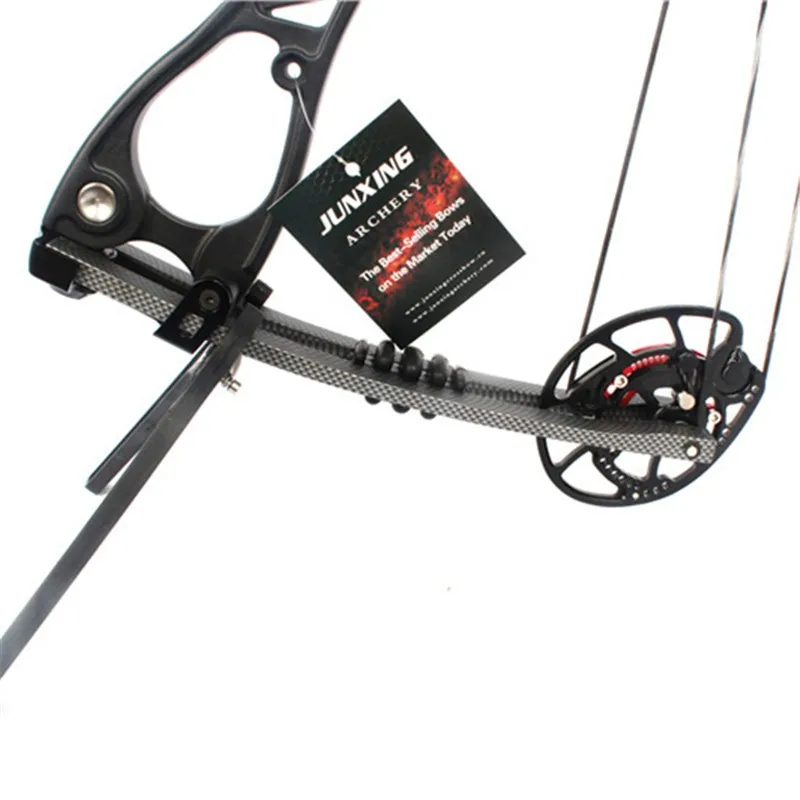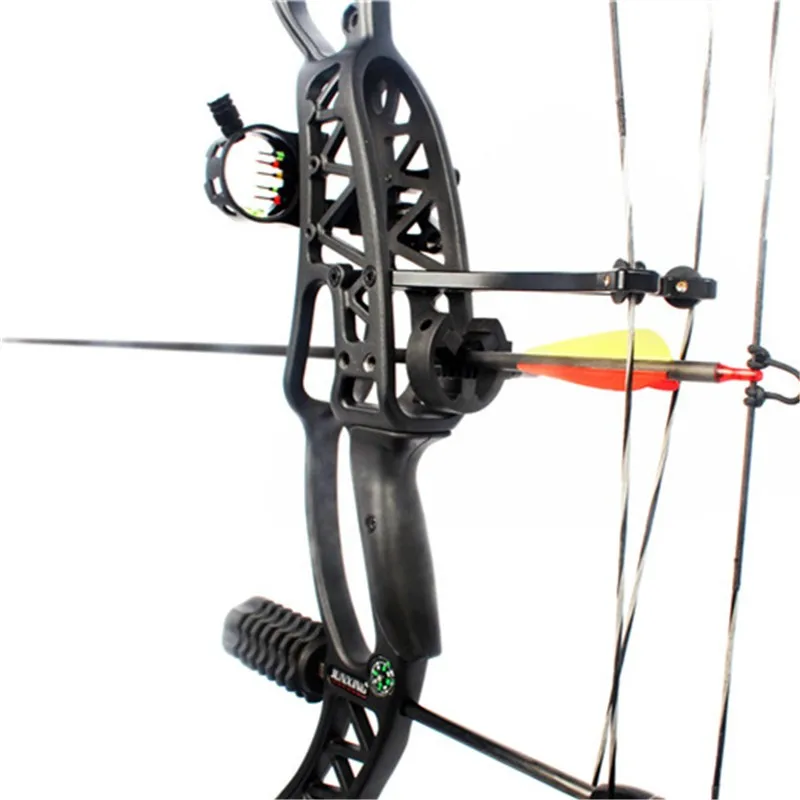The compound bow is the most common type of bow used by hunters and archers today. It was developed from the traditional recurve bow, which has been in use for hundreds of years. The compound bow has several advantages over its predecessors, including reduced energy loss and increased accuracy. This article introduces you to compound bows and discusses how they work as well as their history and uses. If you're looking for a bow that is accurate, has a great weight, and can adapt to your style, then the Junxing M122 hunting compound bow is for you.

A compound bow is a modern archery weapon that uses cables and pulleys to bend its limbs. It was invented in 1958 by Horton who was assisted by Sam Poffenberger. The recurve bow, on the other hand, has been around for centuries. Though it has evolved over time, there’s no denying that it remains one of the most popular bows among hunters and archers alike. If you would like to purchase the Junxing M122 hunting compound bow, please visit our website.
While both types of bows are similar in many ways, there are also differences between them which you need to understand if you want to make an informed decision about which kind of compound bow is right for your needs.
In this article, we will look at the differences between recurve and compound bows. We’ll also discuss how each type of bow is used in modern archery.

The construction of a recurve bow is simple and straightforward. The limbs are attached to the body (riser) with a single bolt, which is connected to an attachment plate on the limb and riser. The string attaches to this bolt as well and pulls back against your hand when you draw it back.
The components of a compound bow can be confusing—after all, there's so much going on that it's easy to get lost in all the different pieces! Let's go over each component individually:
Riser – This is basically the main frame of your bow. It holds everything together, including your grip and sight along with any other accessories you have attached to it (such as stabilizers or quivers). Most risers consist of multiple parts that fit together in various ways depending on their design; some even come with interchangeable risers so you can customize how they look!
Limbs – These are what store energy while shooting arrows; they're made up primarily of two materials: wood laminate or fiberglass lamination materials such as glass/carbon fibers woven into cloths which then become layered around aluminum core material like rods so they're strong enough without being too heavy...
Recurve Bow Parts and Accessories
Arrow Rest: A device that attaches to the bow and holds the arrow in place until it is drawn. It can be constructed of plastic, leather, or wood. The most common type is a spring-loaded arm that fits over the arrow nock.
A quiver is used to carry arrows and other equipment on a waist belt or around your neck. It may attach directly to your bow or be detachable from it; if you want to take only one piece of gear with you into the woods, choose a detachable model that will also provide ample storage for extras such as broadheads and tools like string waxer/lubricator (often called "wax"). Quivers come in several different shapes: round models resemble large coin purses; square ones look like small backpacks; triangular ones resemble military packs with long straps extending down each side so they can be worn close against the body on either shoulder strap while still being easily accessible when needed. Some modern designs have integrated accessories like built-in sights which make aiming easier by eliminating parallax error caused by having both eyes open instead of just one closed like traditional scopes do (though these sights tend not to offer much magnification).
The Junxing M122 Hunting Compound Bow is a compound bow with a draw weight of 25 to 60 pounds. The length of the bow is 62 inches, and it's made from carbon fiber. The draw length can be adjusted from 27 to 30 inches, and you can also adjust the draw weight up or down to meet your needs. In addition, this bow comes with an arrow rest and a sight so that you're ready to shoot when you get it out of the box!
The bow also comes with a wrist sling and finger guards. This is a great bow for beginners, but it's also good for more experienced hunters who want something light and compact.
The bow is built with the latest technology and materials, including carbon fiber. This is a high-quality compound bow that will last for years and perform well in any hunting situation. It has a draw weight of 25 to 60 pounds and a draw length of 27 to 30 inches.
You can adjust the draw weight of the Junxing M122 Hunting Compound Bow using a simple mechanism. It’s easy to find the right draw weight for you, but there are some important things to keep in mind.
First, let’s talk about what you need to know about draw weight:
Draw length and draw angle are two different things and must be measured separately from each other when determining your bow's correct draw length. The correct length is not necessarily equal to its actual measurement as that could result in poor accuracy or performance due to inappropriate alignment with the hand placement on different parts of the riser (more on this later).
A good starting point for hunting bows is somewhere around 30 pounds minimum up until maybe 35 pounds maximum depending on your strength level and personal preference; however, this recommendation may vary depending on whether you shoot left-handed or right-handed respectively so it's best if someone else measures these numbers rather than trying yourself first time round!
You need to be careful not to hurt yourself or others while using your compound bow. Always wear safety glasses, and protective clothing, and make sure that the arrow is pointed away from you when not in use. Do not dry fire (pulling an arrow without an actual target) as this can damage your bow as well as injure yourself or others. Make sure that the bow is in good working order before shooting it.
Make sure that your bow has been properly tuned. If you are not sure, take it to a professional archer who can do the job for you.
Here are the steps to use a compound bow:
Assembly. Assemble your compound bow according to the manual. Check that your limbs and riser are aligned, then tighten all screws with a screwdriver until they're snug but not overly tight. Insert an arrow into the string and make sure it sits in place properly before you attach it to your bow stringer. You can also use an arrow rest for this purpose, which will give you more stability when drawing back on your bowstring (but be sure not to press down on it). If you are looking for an affordable, durable, and high-quality traditional compound bow then you should take a close look at the Junxing M122 hunting compound bow!
Stringing Your Bowstring. Place one end of your bow in a bow stringer or vise grip clamp so that when twisted around, the nock end faces up toward you; then start turning until there are about three inches left at the bottom tip of your stringer assembly (this allows room enough for two fingers). If this is difficult for some reason—such as if there's no room between limbs or if they're too close together—then wrap an elastic bandage around one limb at its center point; this will give enough slack so that once twisted around once more after removing from its original position while holding onto both ends of elastic bandage tightly together like rubber bands would do; next put back into original position again but having removed two fingers worth length instead so now only two digits worth length remain outfitted within elastic bandage looped over both ends before continuing above instructions concerning threading string through loops created during step 2 where
It is important to take care of your compound bow and practice with it. Do not use the same arrow for every shot, as this can damage the point and cause it to lose accuracy over time. Always remember to wear proper safety equipment before shooting, including ear protection and eye protection if needed.
Related Products
Copyright © 2017 - 2024PRECISION BOWS OF JUNXING All Rights Reserved